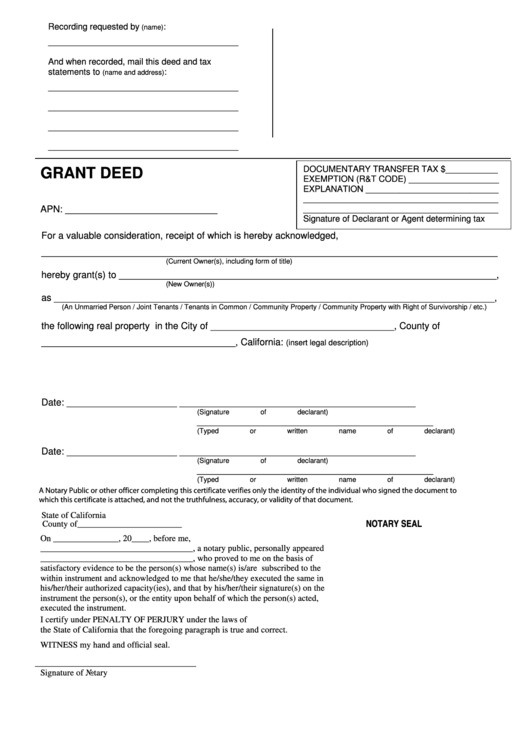When acquiring real estate, the efficient grant deed preparation plays a crucial role in ensuring a smooth transfer of ownership. This legal document serves as a guarantee that the grantor (seller) has clear ownership and the legal authority to transfer the property to the grantee (buyer).
Understanding the Basics of a Grant Deed
A grant deed is a legal instrument that conveys title to real property from one party to another. It provides the grantee with significant protections, asserting that the title is free from undisclosed encumbrances and that the grantor has not transferred the property to anyone else. The specifics of grant deed preparation are essential for avoiding future disputes and ensuring the legitimacy of the transaction.
Key Elements Required for Grant Deed Preparation
1. Identifying the Parties Involved
A critical step in grant deed preparation is clearly identifying the grantor and the grantee. Full legal names should be used to avoid any confusion or ambiguity.
2. Detailed Property Description
The grant deed must include a detailed description of the property being transferred. This typically involves providing the legal description, physical address, and parcel number to precisely identify the real estate. Accurate property delineation is vital in grant deed preparation.
3. Statement of Conveyance
Within the grant deed, a statement must be included indicating the grantor’s intent to transfer the property to the grantee. Phrases like “hereby conveys and grants” are commonly used. This section is central to effective grant deed preparation.
4. Signature and Notarization
The document must be signed by the grantor, and in many jurisdictions, it must also be notarized to be legally binding. The notarization process confirms the authenticity of the signatures and the voluntary nature of the grant.
Why Proper Grant Deed Preparation is Crucial
Proper grant deed preparation ensures that the transfer of property rights is legally sound and free of future disputes. It helps establish a clear chain of ownership and provides the grantee with confidence and legal protection in their new property. Incorrect or incomplete grant deed preparation can lead to legal challenges, financial losses, and prolonged disputes, underscoring the importance of attention to detail in this process.
Common Mistakes to Avoid in Grant Deed Preparation
Errors in grant deed preparation can often complicate property transfers. Some common pitfalls include:
- Incorrect or incomplete property descriptions
- Failure to properly identify all parties involved
- Omitting required signatures or failing to obtain notarization
- Not addressing existing liens or encumbrances
Read more about grant deed preparation here.
Engaging Professional Help
Given the legal intricacies involved, many opt to seek professional assistance for grant deed preparation. Real estate attorneys or specialized legal services can provide invaluable expertise, ensuring every detail is meticulously handled and reducing the risk of future complications.
Conclusion
The careful and precise grant deed preparation is indispensable for a seamless property transfer. Understanding its key elements and avoiding common errors can safeguard both parties and contribute to a legally sound transaction. Whether handled personally or with professional assistance, proper preparation paves the way for clear, undisputed property ownership.



